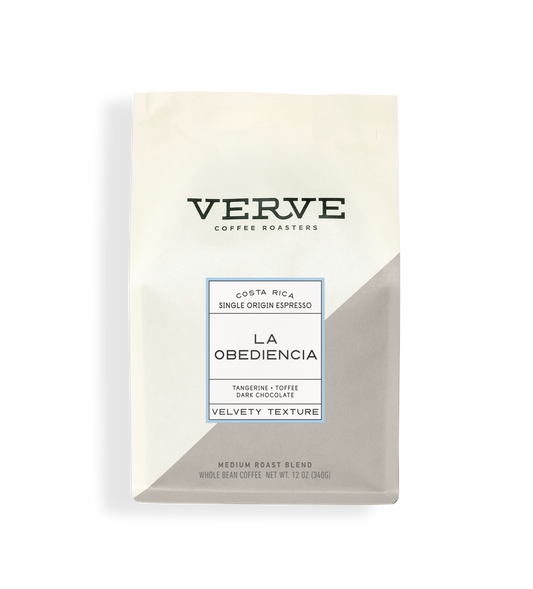Understanding Coffee Beans: the Trip From Coffee to Blended Coffee Beans

The Beginnings of Coffee: A Global Point Of View
While you may believe of coffee as a modern-day staple, its beginnings map back centuries, intertwining with societies throughout the world. The story begins in Ethiopia, where tale states a goat herder named Kaldi found the stimulating impacts of coffee beans after discovering his goats frolicking energetically after consuming them. This triggered passion, resulting in coffee's spread to Arab investors that cherished the brewed beverage. By the 15th century, it reached Persia, Egypt, and Turkey, where coffeehouses ended up being social hubs for discussion and culture.
As profession routes expanded, coffee made its method to Europe in the 17th century, rapidly obtaining popularity. Each society added its special twist to coffee prep work, improving its background.
Growing and Harvesting of Coffee Beans
As coffee's journey evolved, the focus shifted to the growing and harvesting of specific bean selections, specifically those utilized for espresso. You'll discover that espresso beans frequently originate from Arabica or Robusta plants, each offering unique flavors. The optimal expanding problems consist of high altitudes and abundant, well-drained dirt, which boost the beans' quality.
During the harvest, choosing methods vary. Timing is essential; you desire to harvest when the cherries reach peak perfection for optimum taste.
As soon as gathered, the beans are prepared for handling, which is essential in identifying their last taste. Recognizing the growing and gathering processes provides you insight into what enters into your favored coffee, improving your recognition for every mug.
Processing Methods: From Cherry to Bean
Since you have actually discovered gathering espresso beans, let's explore just how those cherries change right into the coffee beans you like. You'll see exactly how various harvesting strategies effect flavor, adhered to by the necessary steps of fermentation and drying. We'll damage down the milling and grading procedure that identifies your coffee's high quality.
Collecting Methods Described
When it comes to coffee, comprehending harvesting strategies is necessary, given that they directly influence the taste and high quality of the beans you appreciate. Selective choosing involves hand-picking only ripe cherries, guaranteeing you obtain the best quality beans. Ultimately, the choice of collecting method can significantly influence your coffee experience, so it's worth recognizing exactly how those beans made it to your cup.
Fermentation and Drying
After harvesting, the next action in processing coffee beans play a significant function fit their flavor. You'll find that fermentation is crucial, as it aids damage down the mucilage bordering the beans, boosting their preference profile. Depending on the approach, this procedure can last from a few hours to several days, with differing results based on temperature and moisture.
Sun-drying allows the beans to absorb tastes from the setting, while mechanical drying out guarantees regular dampness degrees no matter of weather. Appropriate drying is essential to protect against mold and maintain the beans' high quality, inevitably influencing your cup of coffee.
Milling and Grading Process
As fermentation and drying set the stage for taste advancement, the milling and grading process guarantees that just the best coffee beans make it to your cup. This phase entails eliminating the outer layers of the coffee cherry, including the parchment and husk. Premium beans get a higher grade, resulting in a richer coffee experience.
Toasting Methods: Unlocking Taste Possible
When you roast coffee beans, the approach you pick can significantly impact the taste account. Comprehending the partnership in between time, temperature, and toasting techniques is crucial to exposing the possibility of your brew. Let's check out how these components collaborated to produce the excellent cup.
Roasting Approaches Explained
While you could think that all coffee toasting methods generate the exact same outcomes, the reality is that each technique discloses special flavor potentials in the beans. Drum roasting makes use of a turning drum to evenly distribute heat, boosting caramelization and generating a balanced flavor. Air roasting, on the other hand, distributes warm air around the beans, advertising a lighter roast with noticable level of acidity.

Influence on Flavor Profile
Various roasting methods not just affect the process however likewise significantly influence the taste profile of the coffee beans. Dark roasts, on the various other hand, bring out bold, great smoky flavors, often masking the bean's distinct characteristics. Comprehending these nuances aids you value the virtuosity behind your mug of coffee, boosting your total experience with every sip.
Time and Temperature Variables
To launch the full taste possibility of coffee beans, both time and temperature level during the roasting procedure play considerable roles. When toasting, you'll find you can check here that greater temperatures can promptly establish tastes, yet if you rush it, you may wind up with scorched notes. Alternatively, lower temperatures permit for a much more gradual taste advancement, showcasing the beans' unique characteristics.

Timing is just as vital; prolonging the roast also long can bring about a loss of acidity and brightness, while also short a roast might leave the beans underdeveloped. Discovering that pleasant area requires practice and trial and error. By readjusting these factors, you can reveal the rich, intricate flavors concealed within each bean, creating an absolutely impressive coffee experience.
The Art of Blending: Crafting Unique Coffee Profiles

Begin by selecting a base coffee that gives a strong structure. A brilliant Ethiopian bean can bring fruitiness, while a rich Brazilian coffee adds body.
As you mix, maintain in mind that each combination tells a story. You're not simply making coffee; you're developing an experience. Take your time, preference regularly, and appreciate the trip of discovering your signature blend - Single Origin Espresso.
Brewing Methods: How Preparation Impacts Taste
Mixing coffee opens up a domain name of flavor opportunities, but just how you make that blend can substantially influence your final mug. On the other hand, a pour-over highlights the coffee's clearness and brightness, excellent for showcasing fragile notes.
Espresso, with its high stress, creates a concentrated shot that emphasizes sweet taste and crema. If you favor a lighter mixture, consider a cold mixture approach; it generates a smooth, much less acidic preference.
Ultimately, testing is crucial. Changing variables like water temperature, grind size, and brew time can transform your coffee's account. So, welcome the art of brewing to find the flavors hidden in your coffee blends. The right technique can raise your experience to new elevations.
The Future of Coffee: Sustainability and Innovation
As the coffee sector develops, sustainability and technology are ending up being vital for dealing with environmental difficulties and meeting consumer demands. You'll notice that even more coffee firms are adopting eco-friendly practices, from sourcing beans fairly to carrying out lasting farming strategies. These changes not just aid the planet however likewise improve the top quality of the coffee you enjoy.
You might see technologies like naturally degradable product packaging and water-saving brewing techniques that decrease waste. Advanced technology, such as blockchain, is likewise coming to be popular, this contact form making certain transparency in the supply chain, which permits you to map your coffee back to its beginnings.
Furthermore, purchasing local neighborhoods and supporting farmers via reasonable profession efforts fosters a more sustainable coffee ecosystem. As you drink your following cup, keep in mind that your selections can add to a brighter future for coffee. By selecting lasting brand names, you're not simply delighting in a drink; you're making a favorable effect on the globe.
Often Asked Questions
What Is the Difference In Between Arabica and Robusta Beans?
Arabica beans are smoother, sweeter, and have a greater level of acidity, while robusta beans are stronger, much more bitter, and consist of even more caffeine. When making your coffee., you'll observe these distinctions in flavor and aroma.
Just How Does Altitude Affect Coffee Bean Taste?
Elevation effects coffee bean flavor significantly. Greater altitudes generate beans with brighter acidity and complicated tastes, while reduced altitudes often generate beans that are heavier and less nuanced. You'll observe these distinctions in your cup!
What Are the Health And Wellness Advantages of Drinking Coffee?
Consuming coffee can enhance your power, boost psychological focus, and even improve physical performance. It's rich in antioxidants, may lower the danger of specific diseases, and can promote a healthier metabolism when eaten in small amounts.
Can Coffee Beans Be Reused for Brewing?
Yes, you can reuse coffee beans for developing, yet the flavor could be weaker. If you take pleasure in trying out, attempt this page reusing them in various means, like cool brews or contributing to smoothies for an added kick.
How Should I Store Coffee Beans for Quality?
To maintain your coffee beans fresh, store them in a closed container in a trendy, dark place. Stay clear of exposing them to light, warm, or wetness, as these factors can promptly degrade their flavor and fragrance.
Recognizing Coffee Beans: the Trip From Espresso to Blended Coffee Beans.
Currently that you've found out regarding harvesting coffee beans, let's explore just how those cherries change right into the coffee beans you enjoy.When you roast coffee beans, the method you pick can significantly influence the taste profile - Single Origin Espresso.While you could believe that all coffee roasting techniques yield the very same outcomes, the fact is that each method reveals special flavor capacities in the beans.Different roasting methods not only influence the process but also considerably influence the taste account of the coffee beans